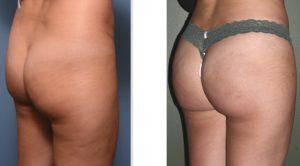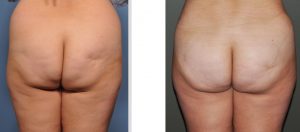Enhancement of the buttocks has become enormously popular over the past decade. Most methods of cosmetic buttock surgery are perceived as that of increasing its size through either implants or, more commonlytoday, fat injections. But buttock enhancement is as much about contouring and reshaping as it is about size increase alone. Large poorly-shaped buttocks are far less appealing than slightly smaller ones that have a more desireable shape.
When evaluating the buttocks, it is best to see it as an anatomic structure with different areas as zones that can be modified. There are essentially six aesthetic zones to the buttocks which can be described as follows: zone 1 is the midline lower back/sacral area, zone 2 is the upper lateral region or low flanks often also called the muffin tops, zone 3 is the middle lateral region where the muscle inserts, zone 4 is the low lateral or greater trochanter area, zone 5 is the upper inner thighs, and zone 6 is the amount of buttock projection seen in the side view.
The relevance of these buttock zones is that they all represent areas of either reduction (liposuction) or augmentation. (fat injections) Zones 1 and 2 are the areas of greatest liposuction fat removal while zones 3, 4 and 6 are the primary areas of fat injection augmentation.
Improving buttock shape is more than just injecting a lot of fat all over the entire buttocks. Skillful reshaping by fat removal combined with fat augmentation is a more successful approach. In many patients, it just isn’t possible to place enough fat or have enough of it consistently survive to create a better shape by simple volume addition alone.


Buttock augmentation is best done through a combination of zonal liposuction reduction and intramuscular fat injections. This is best for those patients that have an excess of fat around the buttocks in the hips, back and waistline.
Dr. Barry Eppley
Indianapolis, Indiana


